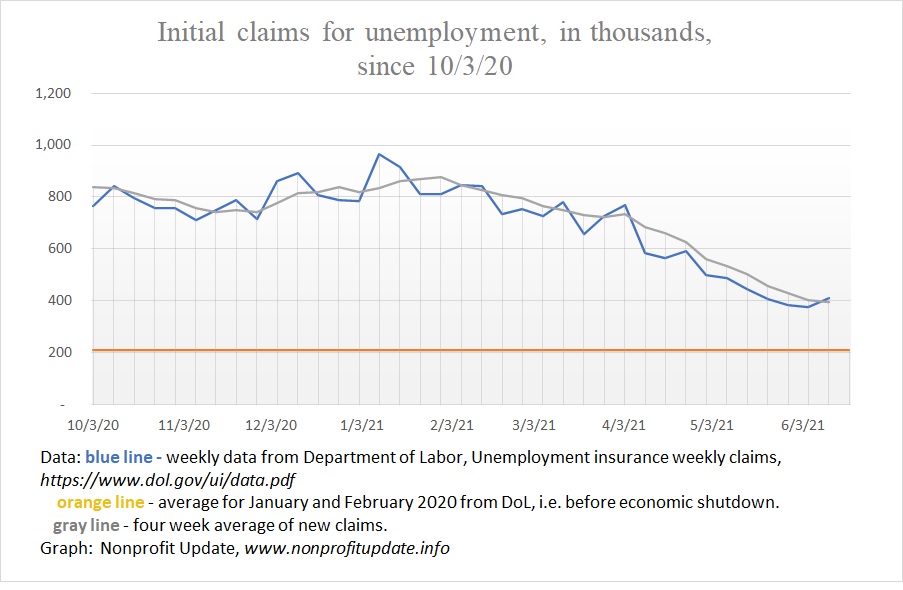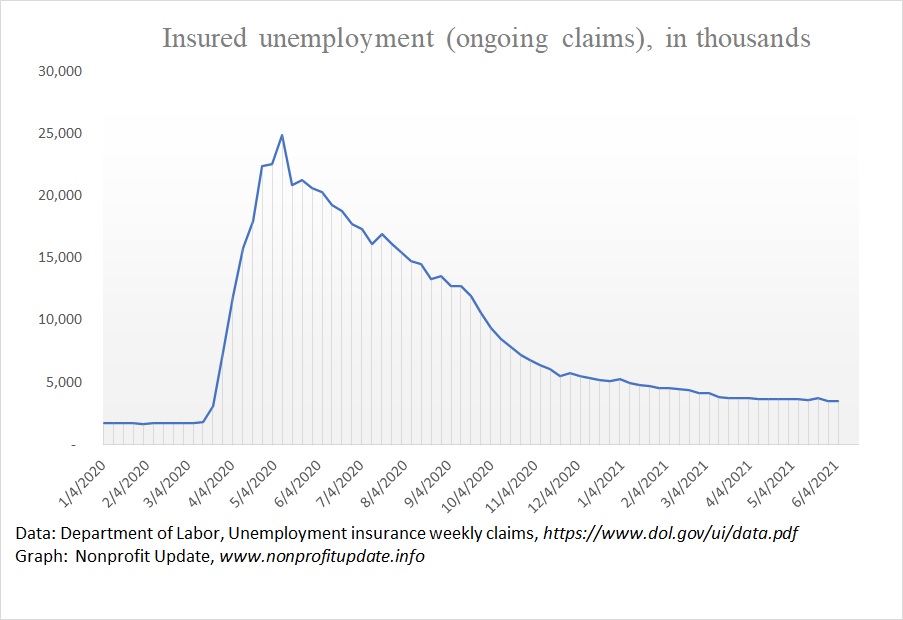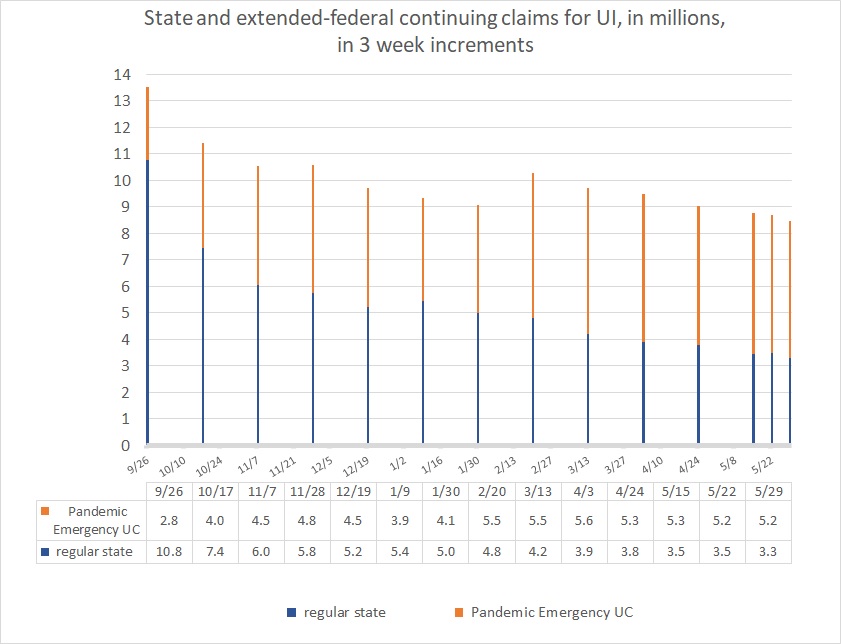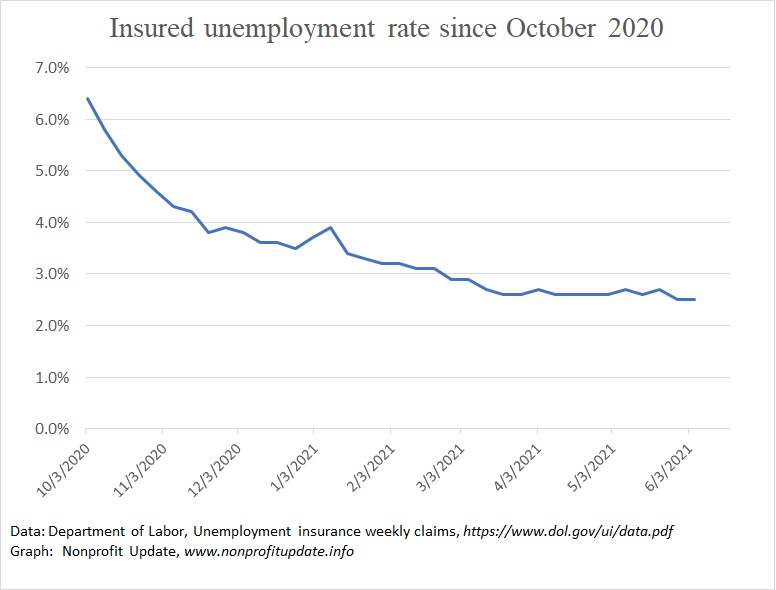
New claims for unemployment are flat compared to three weeks ago. Ongoing claims for unemployment at the state and federal level are declining, slow though the decline may be.
Number of weekly new claims for unemployment was 406,000 three weeks ago and 412,000 the most recent week. The increase in the most recent week offset the decline in the previous two weeks.
Most recent data shows ongoing claims at the state level dropped from 3,602,000 three weeks ago to 3,518,000 in the most recent week, for a net decrease of 84,000. There was an increase two weeks ago, large drop last week, and essentially no change this week.
The number of new claims is still double the average from before the pandemic.
Purpose of these posts on economic statistics is to help all of us keep current on what is going on in the overall economy.
Revised number of weekly new claims in state programs over the last four months to show the trend:
- 728K – 3/27/221
- 590K – 4/24/21
- 406K – 5/22/21
- 412K – 6/12/21
Following graphs show the devastation from the economic shutdown.
New claims
New claims for unemployment by week since the start of 2020:

As mentioned above, the top of this post shows a graph looking closer at the new claims since 9/5/20.
Continuing claims
The number of people covered by unemployment insurance who are continuing to draw checks is extremely high. The number has been declining. However if you look at the following graph the changes been very small since early March. A huge portion of the drop in number of people drawing state unemployment has been offset by increase in number of people drawing extended benefits at the federal level.
Continuing claims in state programs since start of 2020:

Let’s take a closer look at the continuing claims at the state level only since 10/3/20. Notice the relatively flat line for quite a few weeks now and the distance between the last seven months and the normal claim levels before the shutdown:

Continuing claims in state and federal programs
When people exhaust their state level unemployment coverage, they become eligible for the extended federal benefits, called the Pandemic Emergency Unemployment Compensation program.
For many months, the count of people who left the state-level programs was essentially offset by increases in the people covered by the extended 13 weeks in the federal program. In recent weeks the number of people in the federal program has been dropping a bit. The number of total covered unemployed is relatively flat since the first of April.
Looking at the following graph shows a relatively flat line since late October 2020. If you draw a line at the low points in the last seven months and a line at the high points you can visualize sort of a ‘trading range’, with fluctuations between 8.5M and 10.5M in the seven months since 11/7/20.
Graph of state coverage and extended federal coverage:

To provide a clearer picture of the trend, let’s look at the combined federal and state ongoing claims in three-week increments:

Looking at the three-week increments shows slow improvement from 9/26/20 through 1/30/21 with slow improvement since then. You can see the number of people entering the federal program offsets the people exhausting their state-level benefits. Total unemployment tally kinda’ sorta’ looks stagnant in relation to what a healthy economy looks like.
Insured unemployment rate
The proportion of people who are covered by unemployment insurance who are unemployed is also included in the weekly report. As you can see the insured unemployment rate is continuing to drop.

For a closer look, check out the insured unemployment rate since the start of October 2020, showing little change in recent weeks:

Data source
Weekly press release from the Department of labor: Unemployment insurance weekly claims. At the end of the report you can find weekly data for this year. Page 4 has a table containing all the numbers I extracted for weekly update to these tables.